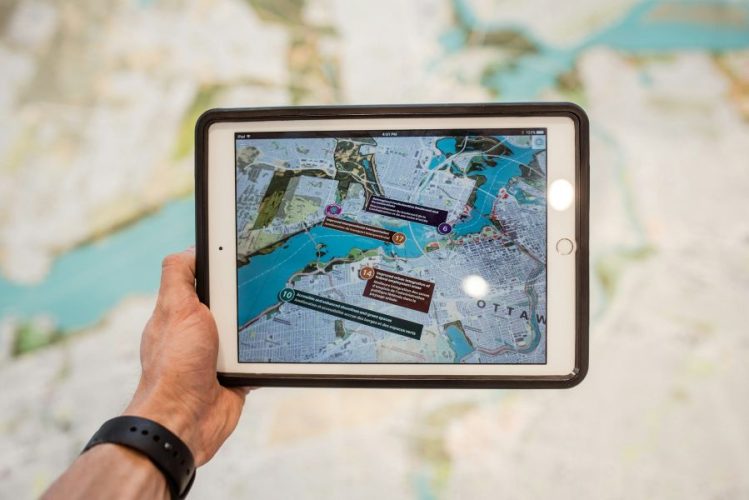Augmented Reality in Cities: Reimagining Urban Navigation

Categories :
Imagine strolling through the city streets, where historical landmarks share their stories directly with you and street signs transform into personal guides, all through the lens of your smartphone. This isn't just a glimpse into what might come; it's the here and now, where augmented reality (AR) breathes life into our urban explorations.
AR is transforming our daily strolls and sightseeing adventures, merging the virtual and real worlds in ways that thrill and delight. If you want to experience it first-hand, start planning your trip today. And don't worry about homework. You always have the option to buy research papers at EssayHub and enjoy your exploration of the world's most innovative cities. With that in mind, let's dive into how AR is reimagining urban navigation.
Revolutionizing Wayfinding
Interactive Maps and Directions
The era of navigating through cities with cumbersome paper maps or squinting at directions on small screens is behind us. AR brings an intuitive approach to navigation, projecting routes directly onto the streets through your device's camera. This hands-free navigation aids not just in reaching your destination but in understanding your surroundings, making every journey an exploration.
Augmented Reality Tours: A New Way to Explore History and Culture
Imagine walking through a historical district where each building tells you its story, or sculptures in public parks come to life to narrate their history. AR tours offer a rich, immersive experience, turning city walks into educational adventures. This technology is not only enhancing tourist experiences but also allowing locals to rediscover their cities in profound new ways.
Enhancing Public Services and Safety
AR for Public Transportation Updates
Public transportation can be a maze for both residents and visitors. AR simplifies this by providing real-time updates and directions overlaid on the actual stations and bus stops. This can make countries comfortable to live in. By pointing your device at a stop, you can get schedules, delays, and even directions to the quickest route, all updated in real time.
Emergency Services and Safety Information through AR
Safety in urban environments is paramount. AR can guide citizens and tourists to safety during emergencies, showing real-time escape routes and safe zones. Additionally, it can provide crucial information about emergency services, nearby medical facilities, and safety tips based on your current location.
Interactive Information Points
Beyond safety, AR creates interactive points of interest throughout the city. Information about local flora and fauna, architectural details, and even hidden gems of the city can be accessed by simply pointing your device at them. This layer of interactivity encourages exploration and a more profound contact with the urban environment.
Challenges and Considerations in Implementing AR in Cities
While the potential for AR in urban spaces is boundless, there are significant challenges:
- Privacy Concerns: As AR applications often rely on capturing and analyzing real-time data from their surroundings, concerns about individual privacy and data protection are paramount. Ensuring user data is handled securely and transparently is a significant challenge.
- Digital Divide: Access to AR technologies is not uniform across different socioeconomic groups, potentially widening the gap between those with and without access to these advanced tools.
- Infrastructure Requirements: Integrating AR on a large scale requires robust digital infrastructure, including high-speed internet connectivity and advanced hardware, which might not be readily available in all urban areas.
- User Acceptance and Adaptation: Encouraging widespread adoption of AR by making it user-friendly and demonstrating its tangible benefits is crucial for its success in urban environments.
- Regulatory and Ethical Issues: Navigating the legal landscape, including copyright laws and ethical considerations related to augmented content, poses additional challenges.
By addressing these concerns, we can unlock the full potential of AR to make our urban spaces more navigable, enjoyable, and interactive.
Future Prospects of Augmented Reality in Urban Spaces
The future of AR in urban landscapes looks promising, with continuous innovations enhancing how we interact with our cities. With the pace of technological innovation, we're set to see even more engaging augmented reality experiences. This will further close the gap between our digital and physical realities, making our interactions with the world around us even more seamless and immersive. The potential for AR to improve urban living, from navigation to education and safety, is immense, marking just the beginning of a more interactive and informative urban experience for all.
The Bottom Line
As we stand on the brink of a new era in urban exploration, AR invites us to envision a future where our urban environments are more than just spaces we inhabit but are dynamic, interactive experiences. For students aiming to dive into the heart of these innovative cities, the journey begins with education. Using resources like the best admission essay writing services can be a stepping stone to college admission in your dream city. You'll be able to use the advantages of modern living, from AR-enhanced navigation to interactive learning landscapes. The prospects of AR to transform city navigation, enhance public safety, and bring history and culture to life right before our eyes are not just exciting; they're revolutionary.
Author: Nicole Hardy
Citiesabc was created by a team of global industry leaders, academics and experts to create new solutions, resources, rankings and connections for the world’s top cities and populations.










